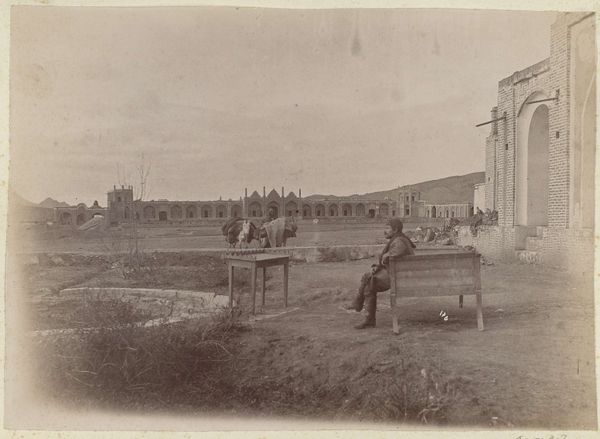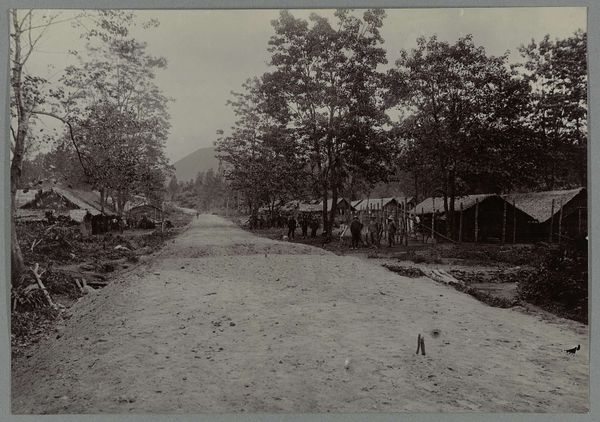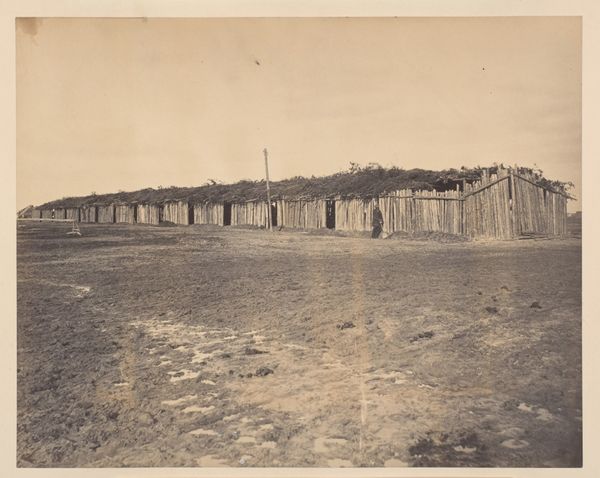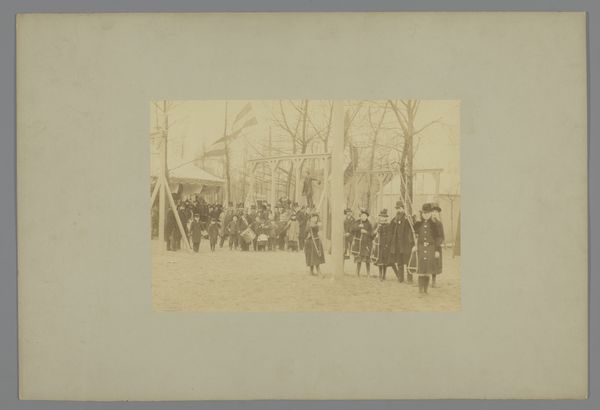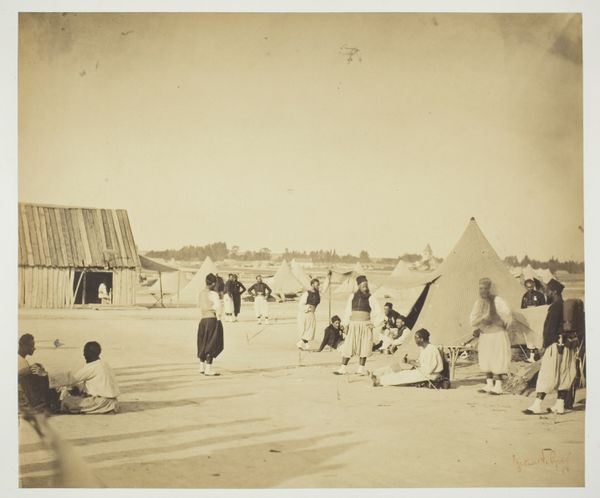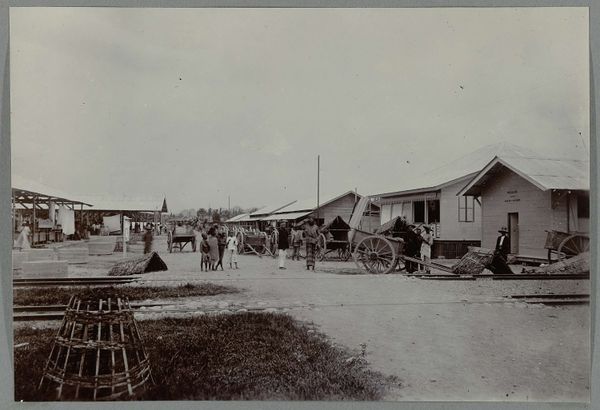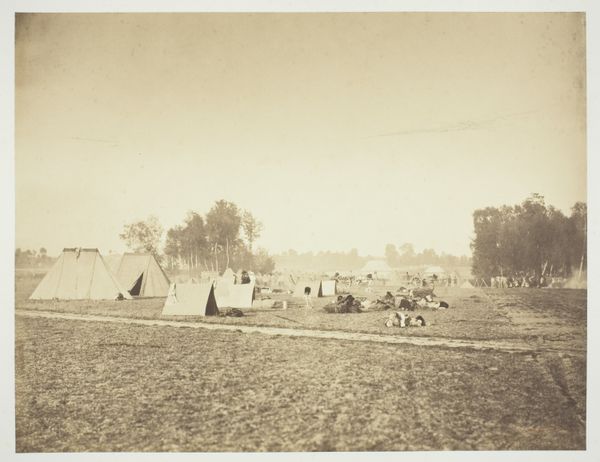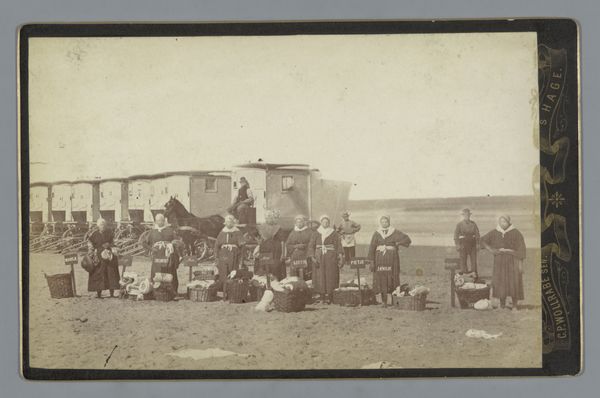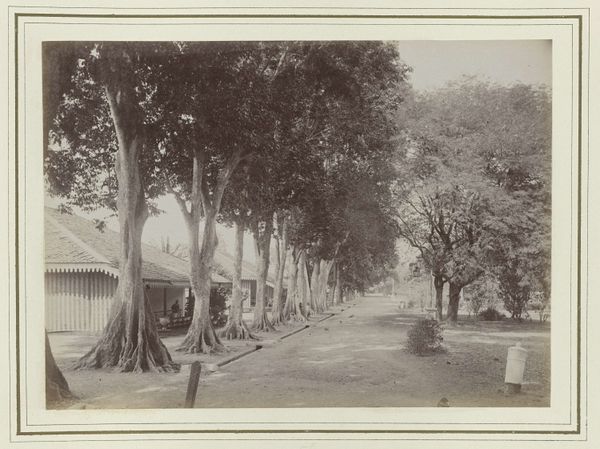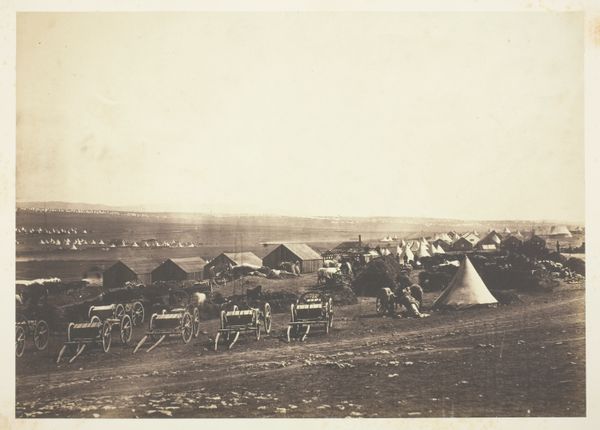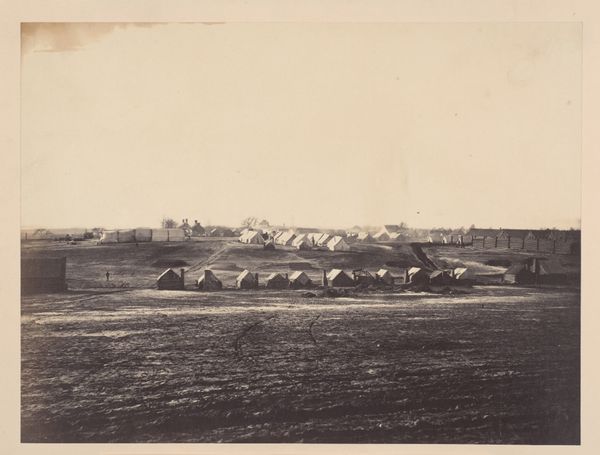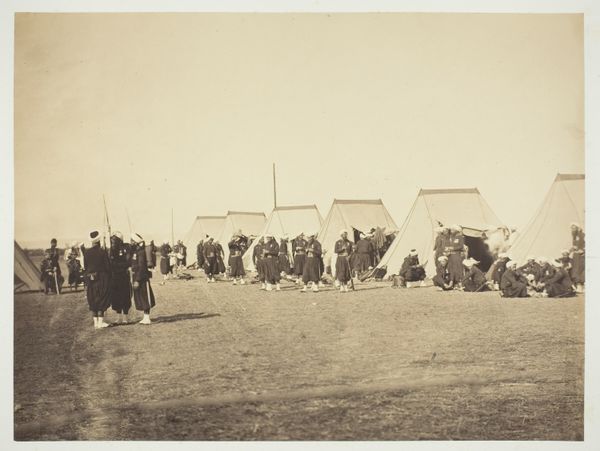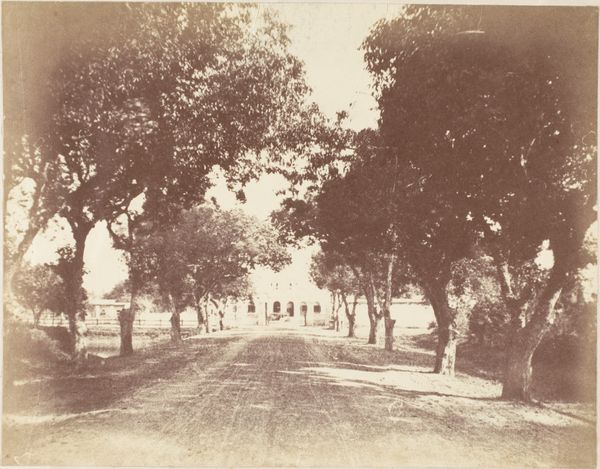
photography, albumen-print
#
aged paper
#
landscape
#
street-photography
#
photography
#
orientalism
#
islamic-art
#
albumen-print
Dimensions: height 155 mm, width 204 mm
Copyright: Rijks Museum: Open Domain
Antoine Sevruguin's photograph, Avenue Lalezar, Teheran, offers a glimpse into late 19th-century Iran, through the lens of a complex, cross-cultural identity. Sevruguin was of Armenian, Georgian, and Russian descent, living and working in a Qajar dynasty that was undergoing significant modernization and grappling with European influence. The image captures a street scene, with a row of buildings on one side and a group of figures on the other. This composition invites questions about who is represented and for whom was the photo made. Was Sevruguin capturing an authentic record of Iranian life, or was he performing an orientalist vision for a Western audience? As a non-Iranian, Sevruguin’s position granted him a unique vantage point. He navigated the intersections of ethnicity, nationality, and religion. His photographs, while celebrated for their documentation of Iranian culture, also prompt reflection on the power dynamics inherent in image-making. Ultimately, the photograph invites us to consider how identity shapes perception and representation, and how these historical images continue to resonate with contemporary discussions about cultural exchange.
Comments
No comments
Be the first to comment and join the conversation on the ultimate creative platform.
